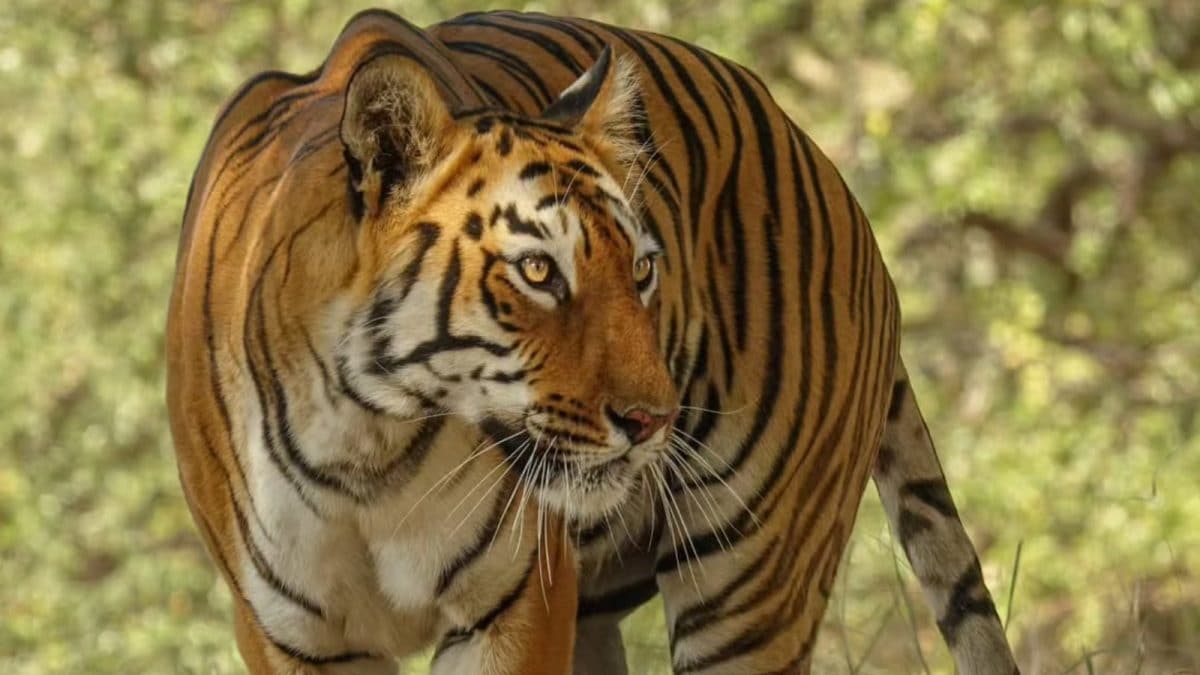Tigers Of Tadoba: Stories From The Heart Of Jungle On International Tiger Day 2025

Last Updated:July 29, 2025, 07:30 IST
On International Tiger Day 2025, naturalist and wildlife tourism consultant Himanshu Bagde shares real encounters with India’s majestic tigers from Tadoba.
Maya, the tiger Queen of Tadoba. (Image: himanshubagde_wildlife/Instagram)
International Tiger Day 2025: Every year on July 29, International Tiger Day raises a global call to protect one of nature’s most awe-inspiring animals. With fewer than 5,000 wild tigers remaining on Earth, the day reminds us not just of the numbers—but of the stories, struggles, and survival of the species we stand to lose.
Nestled deep in the forests of Maharashtra, Tadoba National Park is home to some of India’s most iconic big cats. But beyond thrilling sightings and camera flashes, it’s the raw, quiet moments in the jungle that truly shape one’s understanding of the wild.
To mark this year’s Tiger Day, we spoke with Himanshu Bagde, a naturalist, wildlife tourism consultant, and seasoned tiger tracker who has spent years photographing tigers in Tadoba’s core and buffer zones. His work goes far beyond capturing a perfect shot; it’s about witnessing the untamed, listening to silence, and forging a connection with the jungle.
Q&A With Himanshu Bagde: What Tigers Taught Me
Q: You’ve spent years observing tigers in Tadoba. What’s the biggest myth people believe about them?
Himanshu: People often think of tigers as dangerous and aggressive animals. The thrill of spotting one in the wild adds to this image. But in reality, a tiger is one of the calmest and most patient creatures in the forest. It walks with quiet strength and reacts only when disturbed. It doesn’t seek trouble — it simply wants to be left in peace. The tiger is not a threat, but a symbol of balance and beauty in the wild.
People also assume that every tiger is a man-eater. They believe that, as an apex predator, a tiger’s life is easy and smooth — but that’s far from the truth.
Q: What’s your secret to capturing powerful tiger images without disturbing their behaviour?
Himanshu: To truly understand this, one must step into the quiet world of photography — not just to click a picture, but to fall in love with the subject being captured. The secret lies in admiration.
When you genuinely respect the creature in front of you, patience comes naturally. In that stillness, creativity flows.
Photography then becomes less about the shot and more about the connection — between the observer, the wild, and the moment shared in silence.
Q: What should visitors know before entering a reserve like Tadoba?
Himanshu: Before visiting a park like Tadoba, I wish more people understood that the primary purpose of coming here should be eco-tourism — not just sightseeing. Every tourist has a role to play in protecting the forest. Tigers are not a source of entertainment; they are part of a delicate and beautiful ecosystem.
Visitors should arrive with the mindset to respect and embrace Mother Nature — to observe the jungle calmly and patiently. It is equally important to choose the right tour guide or operator — someone who values sustainability and follows the rules of the forest. Jungles are sensitive and adaptive spaces.
As visitors, we must adapt ourselves as well — by staying silent, remaining alert, and allowing the wild to remain wild.
Q: What’s one tiger encounter in Tadoba that left a lasting impression on you — and what did it teach you about the wild?
Himanshu: Without a doubt — Maya, Tadoba’s legendary tigress. I witnessed her life unfold, from her early days to her dominance across territory.
She was an experience, a presence that left a lasting mark on my journey through the wild. From my first glimpse of her to the last, I had the rare privilege of witnessing her entire life cycle unfold over the years. She wasn’t just a tiger; she was a force.
Through Maya, I came to understand what “survival of the fittest” truly means — not just in strength, but in strategy, patience, and presence. She marked her territory with quiet authority and sustained it for several years, moving with grace yet commanding the jungle with unshakable integrity.
She taught me that in the wild, survival isn’t about dominance — it’s about balance, resilience, and knowing when to rise and when to retreat. Her story stays with me — not just as a memory, but as a reminder of the raw, honest rhythm of nature.

Nibandh Vinod is a seasoned journalist with 26 years of experience, specializing in covering events, festivals, and driving SEO content for News18.com. A tech-savvy person, Nibandh works closely with a young te…Read More
Nibandh Vinod is a seasoned journalist with 26 years of experience, specializing in covering events, festivals, and driving SEO content for News18.com. A tech-savvy person, Nibandh works closely with a young te… Read More
view comments
- First Published:
[title_words_as_hashtags






